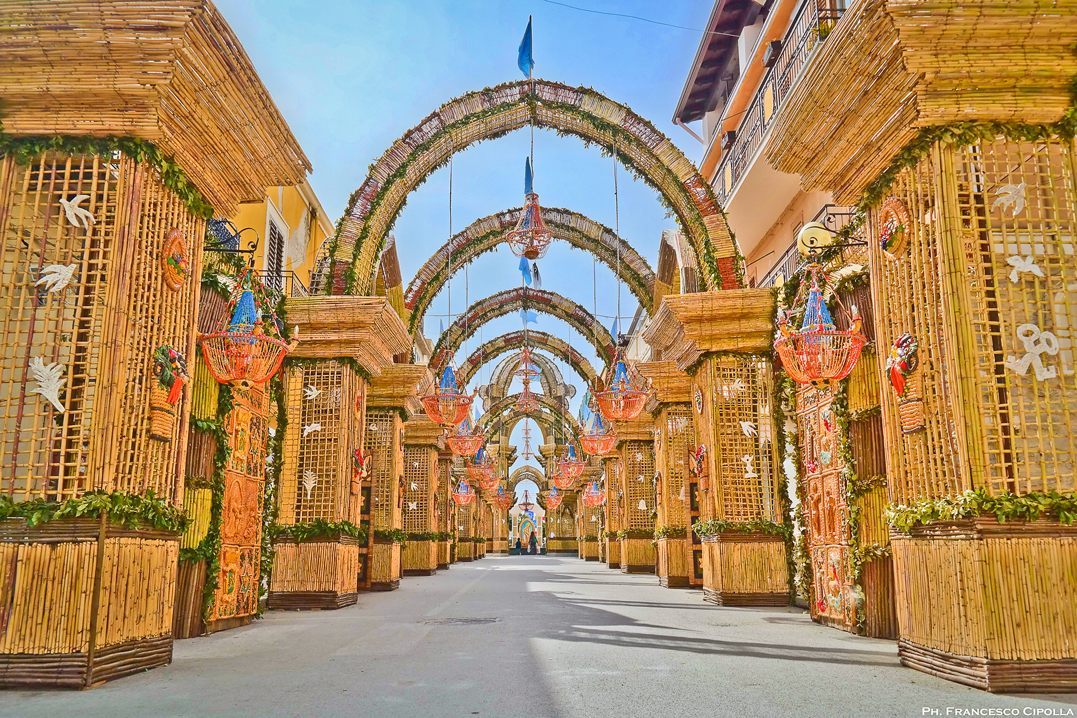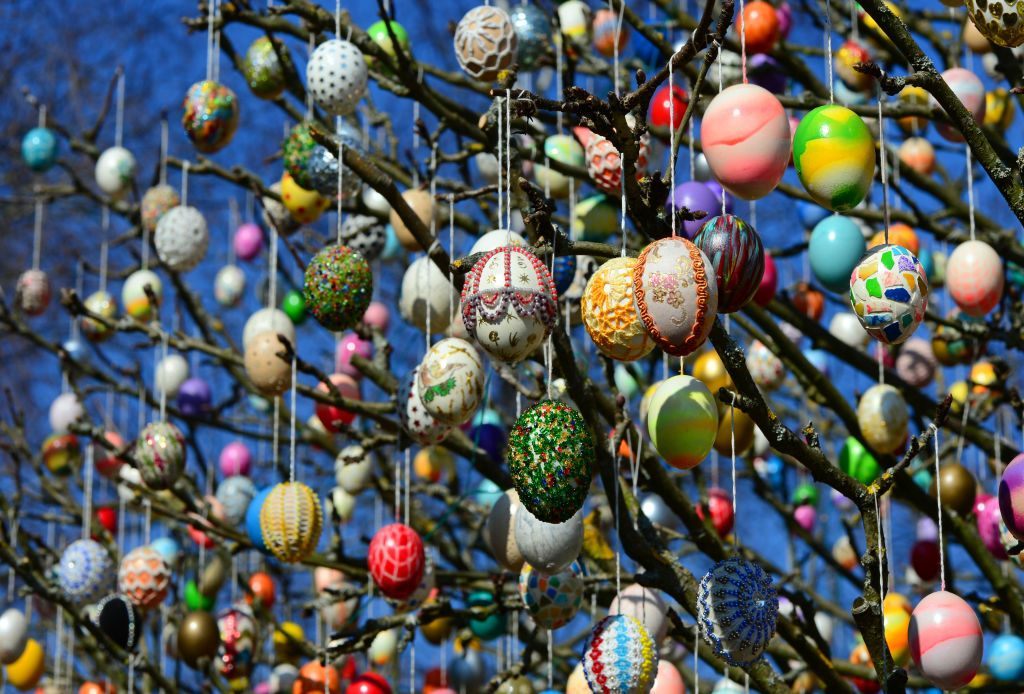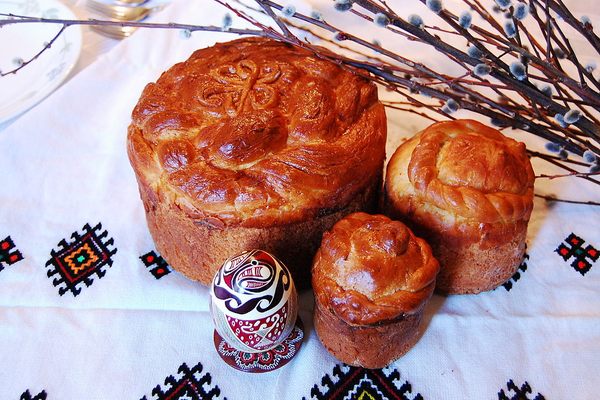7 Unexpected Easter Traditions
Why hide eggs when you can hang them on a tree?
In many parts of the world, the Christian holiday of Easter is now synonymous with bunnies and chicks, chocolate and jelly beans, and the decorating and hiding of lots and lots of eggs. But Easter—marked in 2024 by Western Christians on March 31 and by Eastern Orthodox Christians on May 5—has also been a holiday of ball games (in medieval Europe) and tree decorating (1890s New York), and it remains a celebration of bread, in the form of Ukraine’s paska and England’s hot cross buns. Take the Atlas Obscura tour of under-appreciated Easter traditions, from the towering Arches of Bread in Italy to graveyard feasts of Georgia.
How Easter Egg Trees Almost Became an American Tradition
by Anne Ewbank, Senior Associate Editor, Gastro Obscura
In the spring of 1895, Louis C. Tiffany, of stained-glass and jewelry fame, held a lavish “Mayflower Festival” to benefit a local hospital. “Among the evening’s entertainments,” writes culinary historian Cathy K. Kaufman, “was an Easter egg tree, dazzling with different colored eggs.” This wasn’t unusual at the time. In the era before plastic eggs, many Americans carefully emptied whole eggs of their contents and colored them brightly for Easter, hanging them on tree branches with scraps of ribbon or thread.

Every Easter, a Sicilian Town Builds a Cathedral Out of Bread
by Vittoria Traverso
For months each year, residents of San Biagio in Sicily team up to build life-size structures made of local herbs, cereals, and bread. This monumental display is both centuries old and one of Italy’s most fantastical traditions: the Arches of Bread.
Why Georgians Dine in Cemeteries for Orthodox Easter
by Helena Bedwell
Every year around Orthodox Easter, Georgian cemeteries fill with families drinking wine, nibbling on platters of sweet bread, and rolling eggs dyed a deep blood red. They cry, they offer sweet words of remembrance, and they eat. It’s all part of a longstanding Georgian tradition of dining with the dead every spring.

The Powerful Symbolism of Ukraine’s Easter Bread
by Anne Ewbank, Senior Associate Editor, Gastro Obscura
It’s hard to imagine celebrating Easter, a holiday of spring and rebirth, in the middle of a war. But in Ukraine, bakers are still making their Easter breads, known as paska, with pride and defiance. Sweet, egg-laced breads are part of nearly every European country’s celebratory menu, especially around Easter, but Ukrainian bakers go all out, covering their breads with tiny, flour-y birds, braided shapes, and curved crosses, occasionally baking them into towering domes with lots of icing.
Remembering the Tansy, the Forgotten Easter Pancake of Centuries Past
by Natasha Frost
Almost every holiday comes with its own accompanying foodstuff. Easter treats seem self-evident: chocolate, eggs, and chocolate eggs. But for hundreds of years, the English ate something entirely different at Easter: a sweet, herbal concoction—somewhere between a pancake and an omelet—known as a tansy. It was green, herbal, and slightly toxic.

How This London Pub Got Its Buns Back for Easter
by Anne Ewbank, Senior Associate Editor, Gastro Obscura
Hanging hot cross buns from the ceiling has a long history in the United Kingdom. In ancient times, worshippers ate sweet buns marked with a cross to honor Eostre, the goddess of the dawn. When “Eostre” became “Easter,” the buns stuck around. Still today, the tradition continues in some London pubs.
The Lost Tradition of Playing Ball in Church to Celebrate Easter
by Sarah Laskow
In Auxerre Cathedral and other places of worship in northern France, on Easter Monday in the medieval era, clergy gathered around the church’s labyrinth, danced in a circle, and tossed a ball from person to person—a joyful celebration of Easter, with strict rules, that evolved from pagan rituals.




































Follow us on Twitter to get the latest on the world's hidden wonders.
Like us on Facebook to get the latest on the world's hidden wonders.
Follow us on Twitter Like us on Facebook